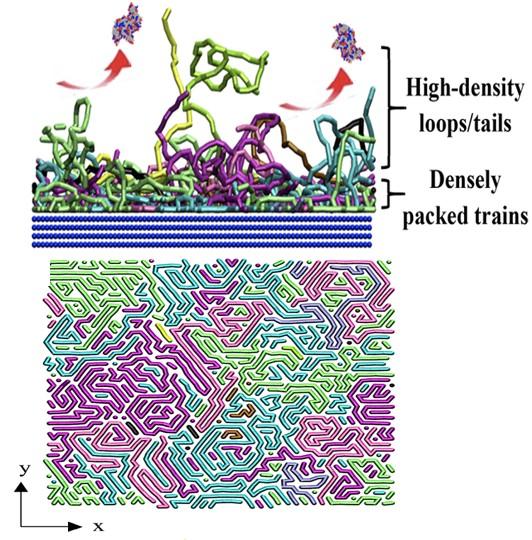
Top: Out-of-plane polydispersed brush conformation of the “loops” and “tails” of the flattened chain. This establishes a dual barrier to protein adsorption. Bottom: In-plane structure of the polymer “train” segments showing nematic-like order.
Scientific Achievement
The nanometer-scale architecture of polymer chains is shown to play a crucial role in protein resistant and antifouling properties.
Significance and Impact
Since a polymer’s nanoscale architecture acts a a dual barrier against protein adsorption, it can be used to create a general approach for the design of antifouling surfaces for applications such as medical devices, ship hulls, and membranes.
Research Details
– Sum frequency generation (SFG) spectroscopy clarified the nonsignificant role of the interfacial water in the emergence of an antifouling property. – Molecular dynamics (MD) simulation established the generality of the self-organized structures of polymer nanolayers in water: high-density “loops” and “tails” and nematic-like order of “trains.”M. K. Endoh, Y. Morimitsu, D. Salatto, Z. Huang, M. Sen, W. Li, Y. Meng, D. G. Thanassi, J-M. Y. Carrillo, B. G. Sumpter, D. Kawaguchi, K. Tanaka, and T. Koga, "Protein resistance driven by polymer nanoarchitecture," ACS Macro Lett. 8, 1153-1159 (2019). DOI: 10.1021/acsmacrolett.9b00518



